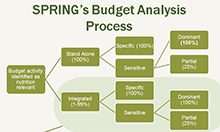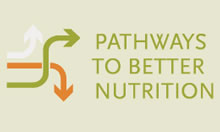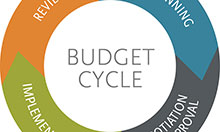Financing is a key piece of any effort to improve nutrition at scale. In its recently-released Nutrition Strategy, USAID highlights the importance of financial systems, stating that political will for nutrition must be reflected through financial support, both at the national and sub-national level. A number of very robust costing activities have been completed, or are underway, by MQSUN, UNICEF, the World Bank, and others. Costing, however, is only half the picture—stakeholders need to know whether or not sufficient funding is being channeled to nutrition to meet the estimated costs.
SPRING’s Pathways to Better Nutrition (PBN) Case Studies are examining nutrition financing in both Uganda and Nepal. One of their key findings has been the difficulty in identifying resources budgeted or allocated for nutrition. A systematic approach to tracking resources is essential to establish budget lines and allocate funds for nutrition activities in national and district budgets.
Based on these findings, and following a formal request from the Uganda MoH, SPRING developed a tool for researchers to extract nutrition budget data from government and donor budget documents. It is intended to assist government officials to identify nutrition funding amounts in their budgets. The tool was used in Uganda to build the capacity of government officials to track and advocate for nutrition funding within their ministries, while also facilitating the collection of important data around nutrition scale-up. SPRING tested the draft tool and facilitation guide during a training of MoH officials. The User's Guide and Tool are available for use by other countries and stakeholder groups.



